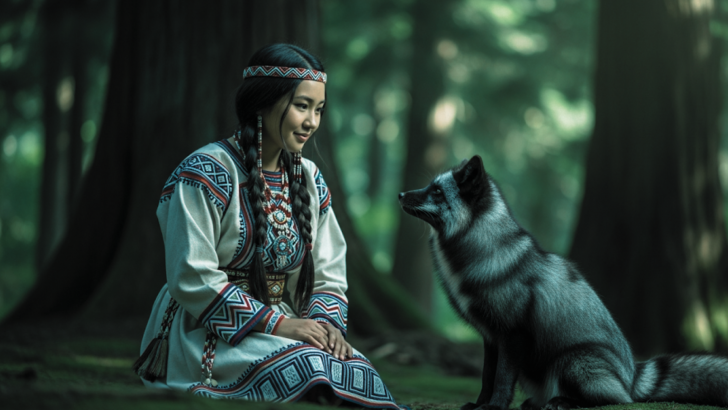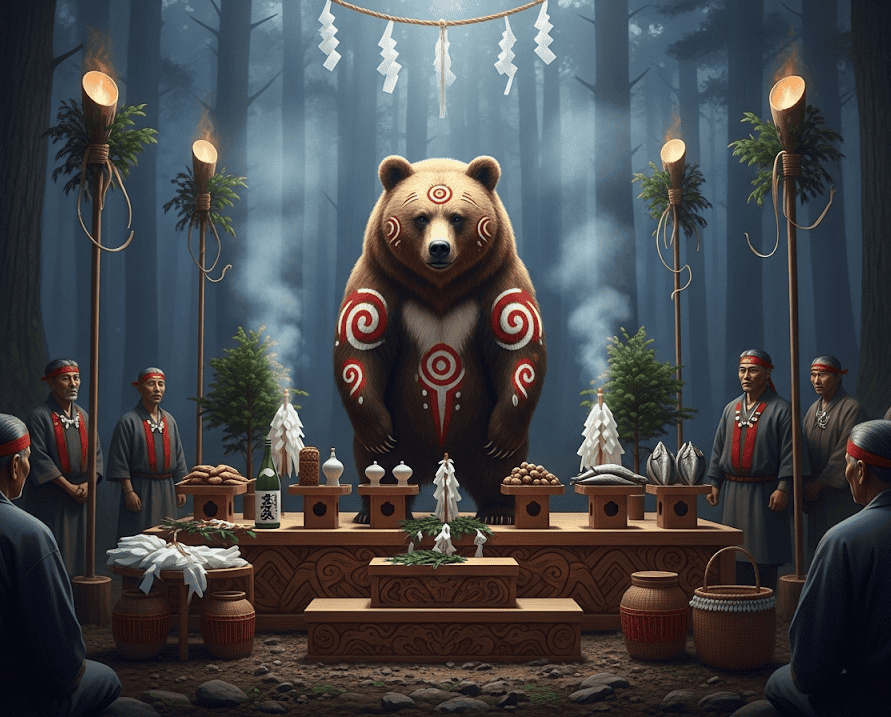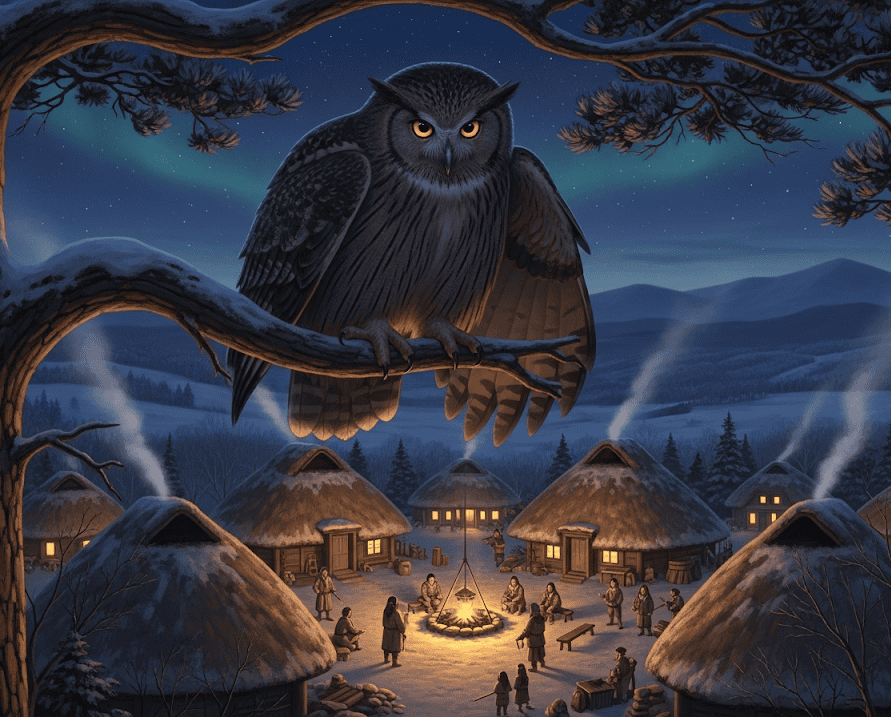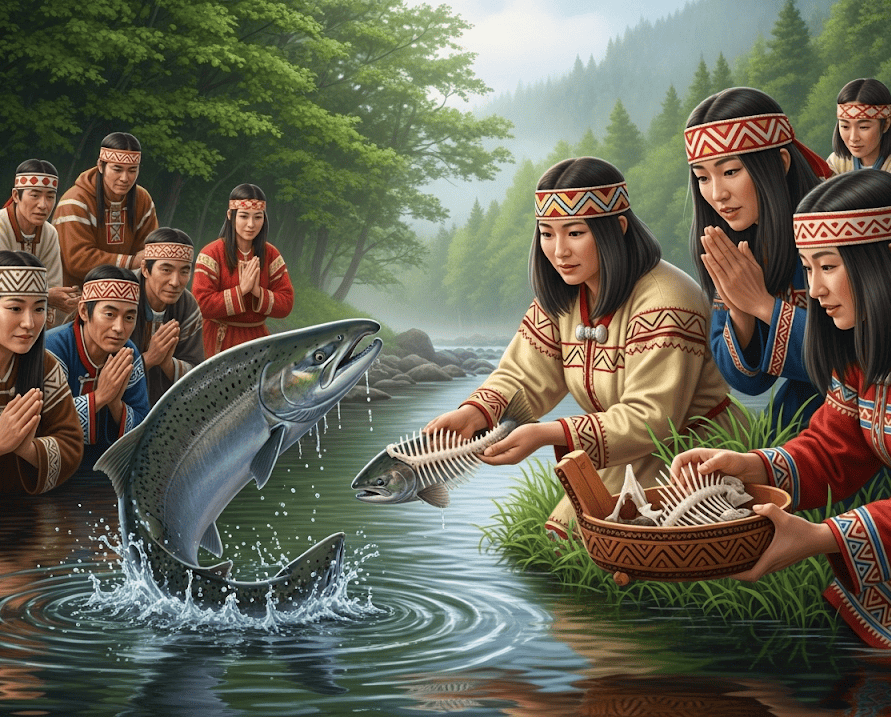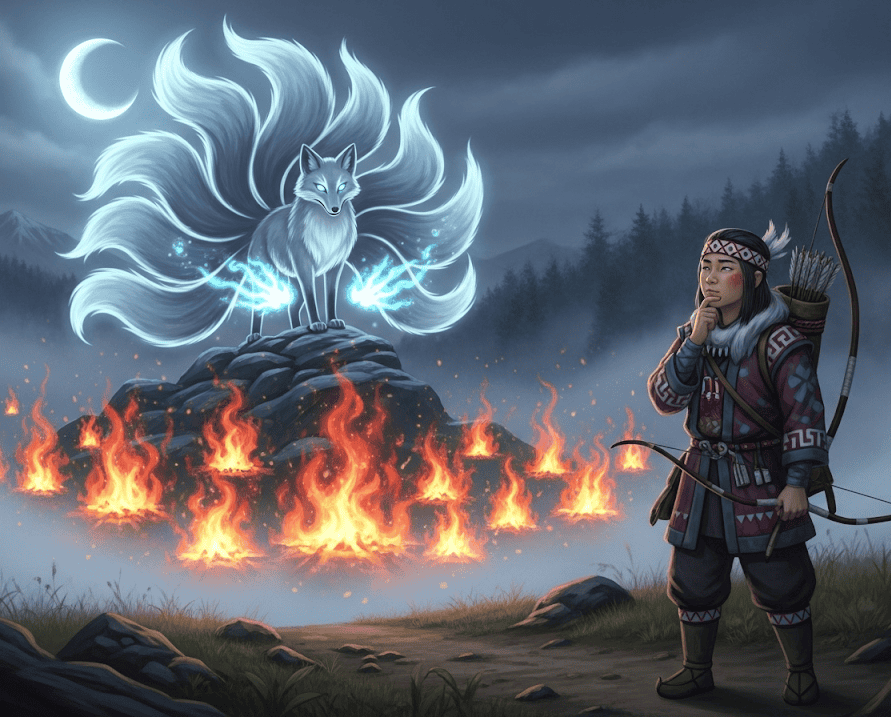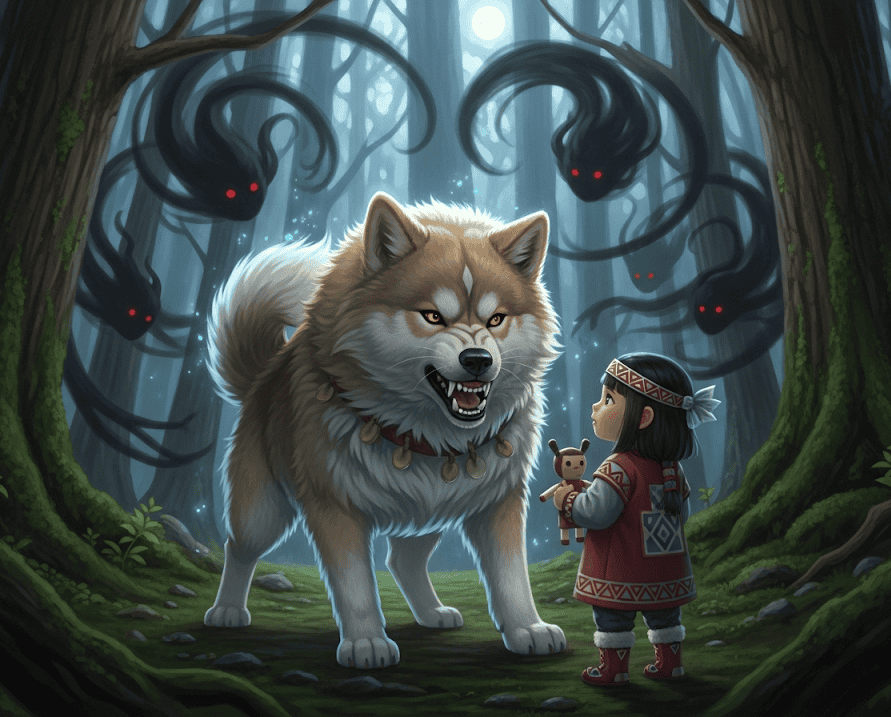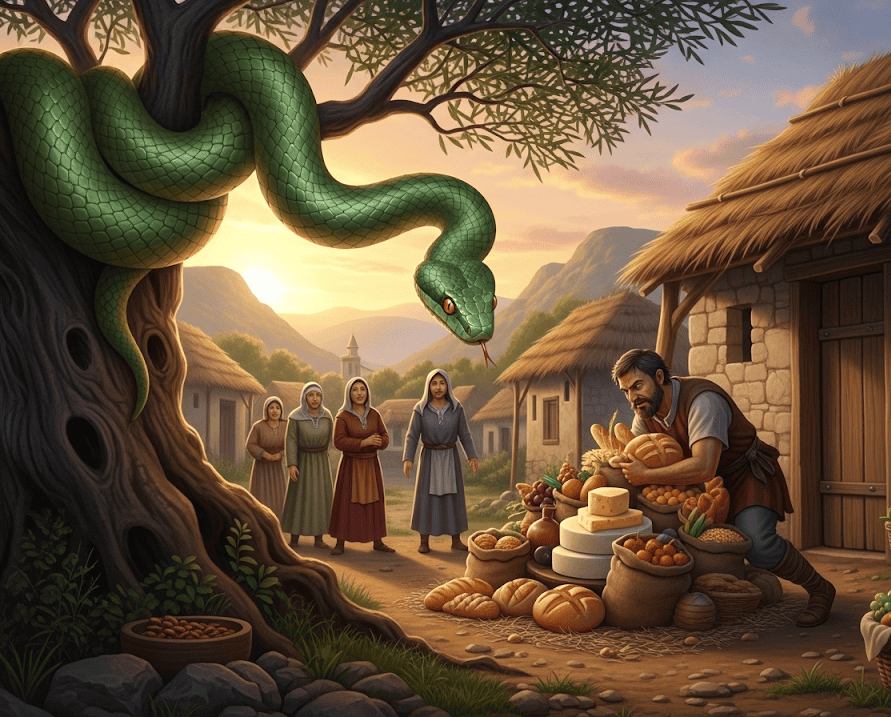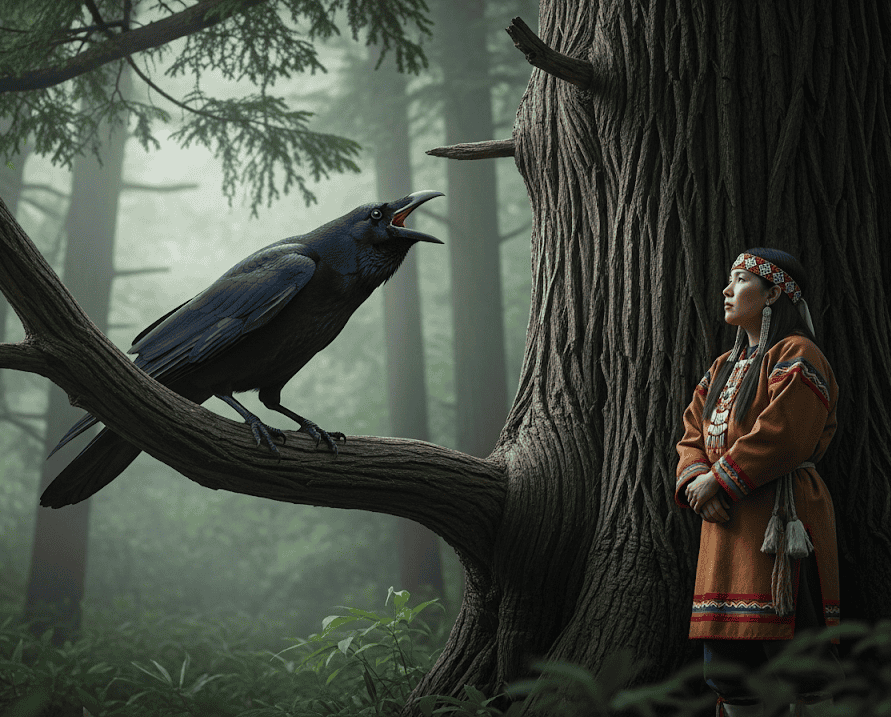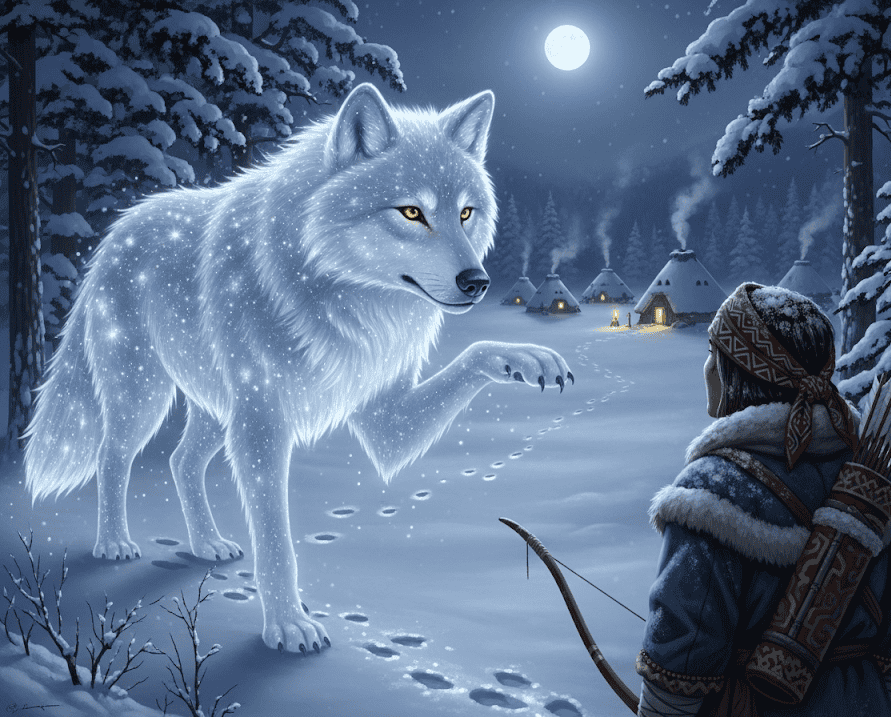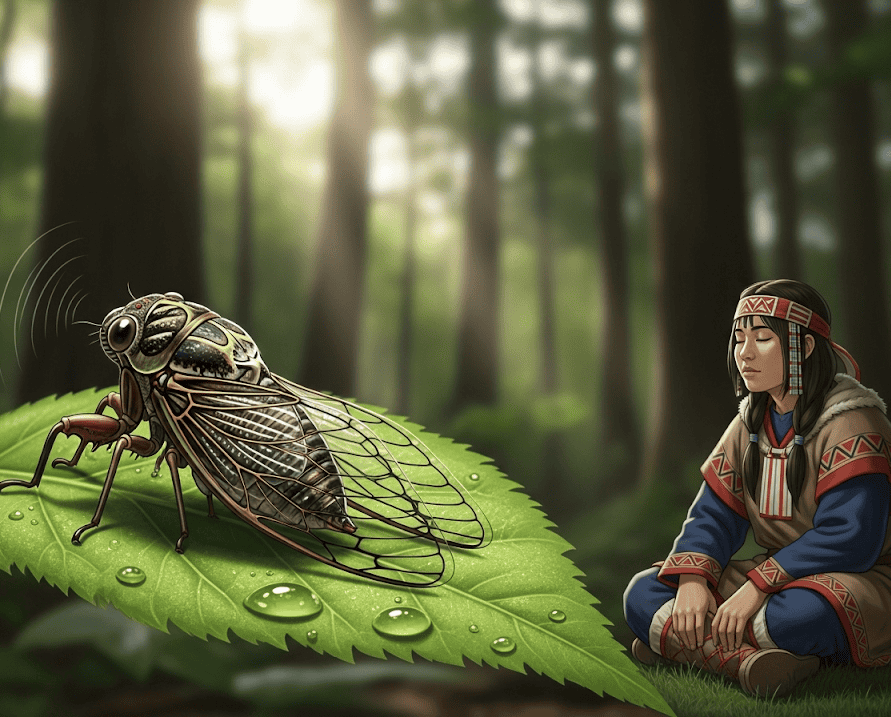For the Ainu people of northern Japan and Hokkaido, animals were not just companions in the natural world.
They were kamuy, divine beings, spirits with wisdom, power, and lessons to share. Some protected, some tested, and others reminded humans how to live in balance with the earth.
Through myth, animals shaped rituals, traditions, and the way people thought about life itself. Here are ten mythic animals that carried special meaning in Ainu spirituality and what they still whisper to us today.
1. The Bear, King of the Mountains
Among all creatures, the bear or Kimun Kamuy held the highest place. Bears were seen as gods visiting the human world in furry disguise.
The Ainu believed that when a bear was hunted, it was not simply killed but ceremonially sent back to the divine realm.
Festivals honored the bear with offerings and songs. This animal shaped spirituality by teaching respect for life.
The bear reminded people that even when you take, you must give back. Fearsome yet divine, the bear embodied both survival and sacredness, making every hunt a prayer rather than just an act of survival.
2. The Owl, Guardian of Villages
The Blakiston’s fish owl, one of the largest owls in the world, was honored as Kotan-kor Kamuy, the protector of villages.
Its great eyes and deep calls were said to keep away misfortune. Myths tell of owls warning people about approaching disasters or bringing guidance through dreams.
For the Ainu, the owl was not a symbol of doom but of safety. It taught that watchfulness and awareness are forms of protection.
The village guardian reminded people that sometimes safety comes not from fighting but from seeing clearly before danger arrives.
3. The Salmon, Gift of the Rivers
Salmon were more than food. They were sacred gifts from the river spirits who allowed them to swim upstream to nourish humans.
One myth says that salmon willingly offered themselves, and failing to treat them with respect could anger the water kamuy and stop the cycle.
The salmon taught gratitude and reciprocity. Eating was not just a daily act but part of a larger relationship.
By honoring salmon bones and returning them to the river, the Ainu kept balance with the natural world. The lesson is clear: when you take, you must honor the source.
4. The Fox, Clever Trickster
Foxes, or kitsune, appear across many Asian traditions, and the Ainu had their own tales of cunning fox spirits.
These creatures often tricked humans with illusions, creating phantom fires or changing their shapes to confuse travelers.
Yet foxes were not purely negative. They taught caution and cleverness.
In Ainu myths, the fox shaped spirituality by reminding people that appearances deceive. Fear, greed, or pride could lead you into a fox’s trap.
The wise person learned to pause, question, and see through illusions before reacting.
5. The Whale, Messenger from the Sea
Whales were seen as enormous beings connected to the sea gods. When a whale washed ashore, it was not considered random luck but a divine gift.
Rituals of thanks were performed, and the event was celebrated as a blessing from Repun Kamuy, the deity of the ocean.
Whales shaped spirituality by teaching the people reverence for rare gifts. These massive animals showed that abundance could arrive unexpectedly and must be honored properly.
The whale reminded communities that the ocean’s generosity was sacred, never to be wasted.
6. The Dog, Faithful Protector
Dogs were not only practical hunting companions but also seen as spiritually important protectors.
One myth tells of a dog who defended a child from evil spirits, fighting until dawn and then disappearing into the forest.
Dogs were believed to sense unseen dangers and to carry loyalty even beyond death.
In spirituality, the dog shaped how people understood devotion. Its presence reminded them that courage does not always mean strength, but faithfulness and willingness to guard others even in darkness. The dog was a living lesson in loyalty.
7. The Snake, Silent Power
Snakes in Ainu myths carried complex meanings. Some were feared as messengers of disease or dangerous spirits, yet others were linked to fertility, water, and hidden wisdom.
One tale tells of a snake who punished a greedy man for hoarding food, reminding the village to share.
Snakes shaped spirituality by embodying quiet power. They taught caution, respect, and humility in the face of forces humans could not fully control.
Through the snake, the Ainu learned that fearsome creatures also carried important truths about balance and respect.
8. The Crow, Voice of Warning
Crows were often seen as messengers between worlds. Their sharp cries could signal approaching change, danger, or even death.
Yet they were also clever and resourceful, qualities admired in a world where survival depended on wit.
In spirituality, the crow shaped how people listened to omens. Its call reminded them to pay attention, to look closely at signs in the environment, and to prepare for what might come.
The crow’s voice was not just noise but a reminder that the world is always speaking if we know how to hear it.
9. The Wolf, Spirit of the Wild
Wolves, known as Horkew Kamuy, were respected as strong hunters. They lived in packs and carried the spirit of cooperation and ferocity.
In one myth, a wolf guided a lost hunter back to his village, protecting him along the way.
The wolf shaped spirituality by embodying both independence and community. Its howl reminded humans that wildness had its own laws.
Through the wolf, the Ainu learned the importance of respecting freedom while also honoring the strength of the group.
10. The Cicada, Voice of Impermanence
Even the small cicada had a role in Ainu spiritual imagination. Its brief life and haunting song were reminders of impermanence.
Myths describe cicadas as voices of spirits, singing their short truth before fading into silence.
The cicada shaped spirituality by teaching acceptance of life’s fleeting nature. Its fragile presence reminded people that fear of endings is natural, but beauty often lies in moments that do not last forever.
Listening to the cicada was a way of learning to live fully in the present, appreciating life’s gifts and blessings.

私は生まれたときから、常に神との強いつながりを感じていた。作家として、また指導者として、私の使命は、人々が最も暗い時代に愛と幸福と内なる強さを見つけるのを助けることである。

